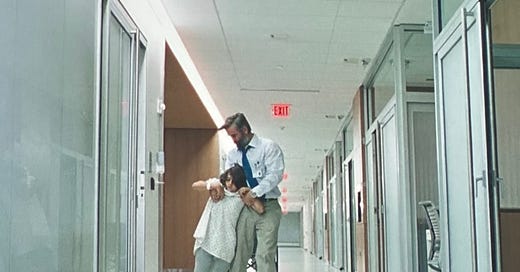Experts
This is Western Coffee—notes on building the creative body. Last time: Standing up. The whole series is here. Please share this email; you can sign up free below.
I’ve mentioned having to keep an eye on one of my heart valves. My insurance changed this year and I found a new cardiologist; we met toward the end of June. I asked him to remind me of the prognosis, especially with regard to athletic training. My underlying issue is common in “triathletes, especially,” he said, and I would probably be fine to continue “as long as there’s no pulmonary hypertension”—which I would later learn is elevated blood pressure in the relatively fragile vessels in the lungs.
The next week, I went for an echocardiogram. A technician captured my heart from several angles using ultrasound. The week after that, I got the report.
One of its observations hit me pretty hard: “mild pulmonary hypertension.” My conversation with the doctor had been so perfunctory that I had little idea of what I was dealing with. Did “mild” mean it wasn’t a big deal? What, exactly, would have to change if it was?
I was traveling and couldn’t see him right away, so I passed the time reading a bunch of studies. I rank high on the not-a-doctor scale, but I started to feel like I was building a basic fluency: My crude early Googles led to sharper questions, and before long I had a grasp on how pulmonary arterial pressure is estimated from an echo and where the potential for error lies. And I found a study that noted how common higher pulmonary pressure is in endurance athletes, whose hearts change structure in response to repeated stress—not always a benign effect, but different from a pathology. That was enough to tamp down my immediate panic. Just in case, I made a list of every piece of my identity that wasn’t being an athlete.
The day for my appointment finally came. The doctor and I didn’t have any of the conversations I thought we might about ePASP and RVSP and tricuspid regurgitation velocity and ejection fraction and catheterization and vasodilators. Instead, he told me he didn’t agree with the report.
Because of a quirk with insurance, he hadn’t been the first one to interpret the images. So now he pulled up the raw data and, pretending I could follow along, showed me the things that would be a problem if they were a problem and why he thought they weren’t. It wasn’t a clean bill of health, but neither was it a ground stop.
My cardiologist was less interested in what another expert had written about my heart—or what I’d read from still other experts—and more interested in looking, in seeing what he saw. This is both an embrace of and a disclaimer about expertise: It comes with conditions, some of them not obvious. There’s a creative-process application here, too, in that those of us who are fabricating something in a domain where lots of people are deep experts (as by writing fiction about a historical figure) can’t hope to match them. But we can say what we see; they might have missed it.
Kindly send me your thoughts, questions, and provocations: dmichaelowen@gmail.com. And say hi on Instagram or Threads, or let’s Peloton together: @leggy_blond.



